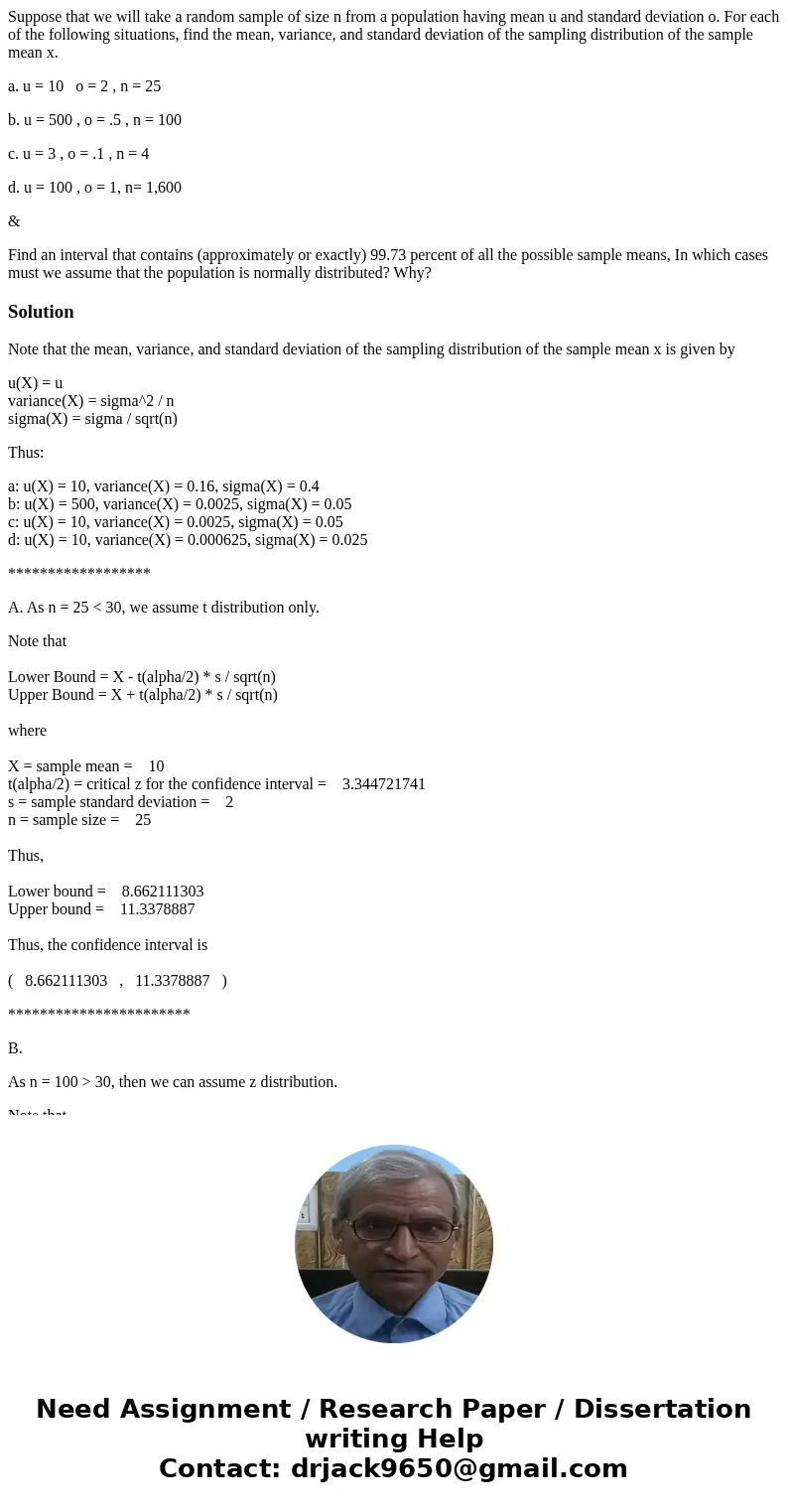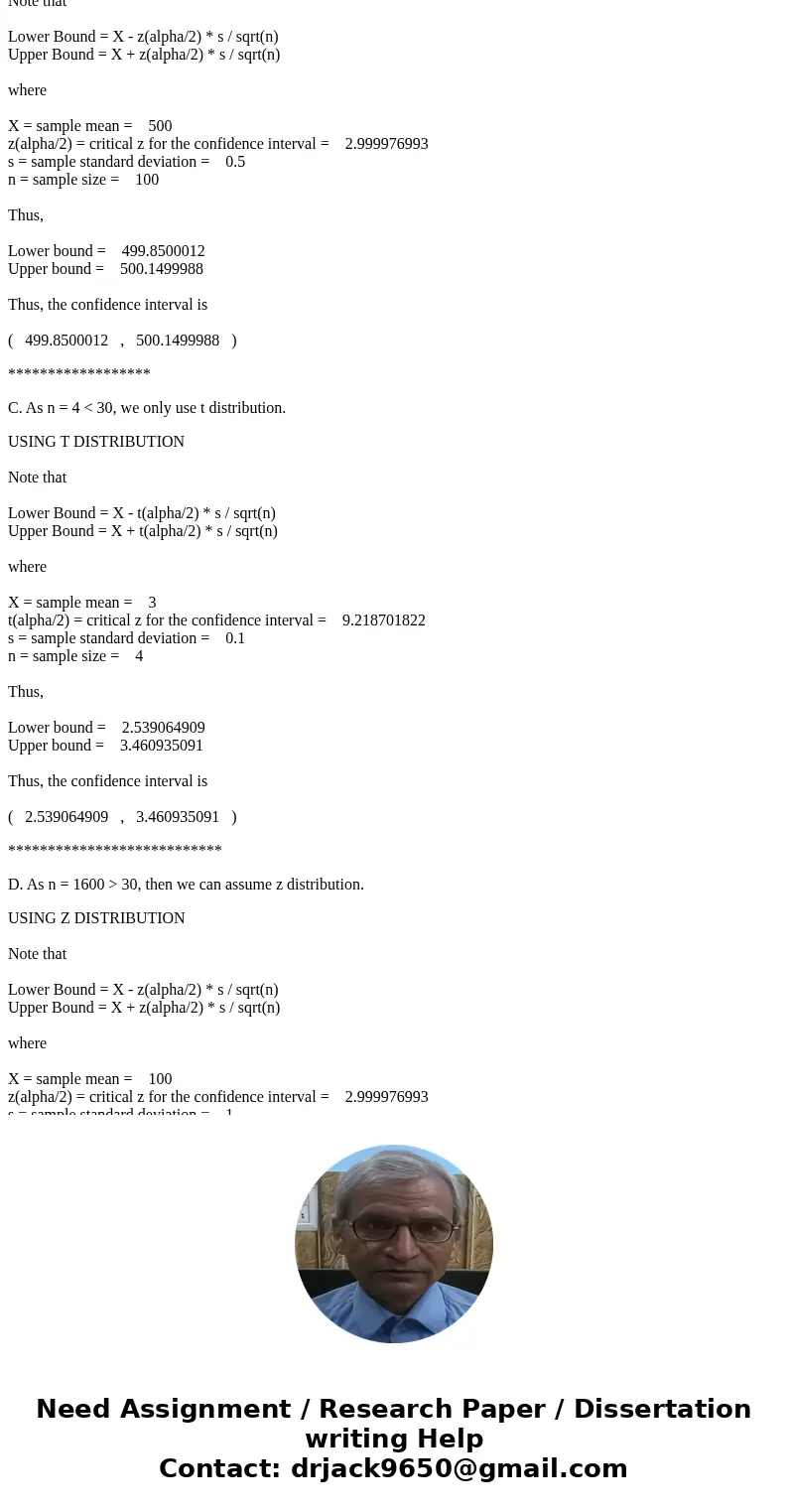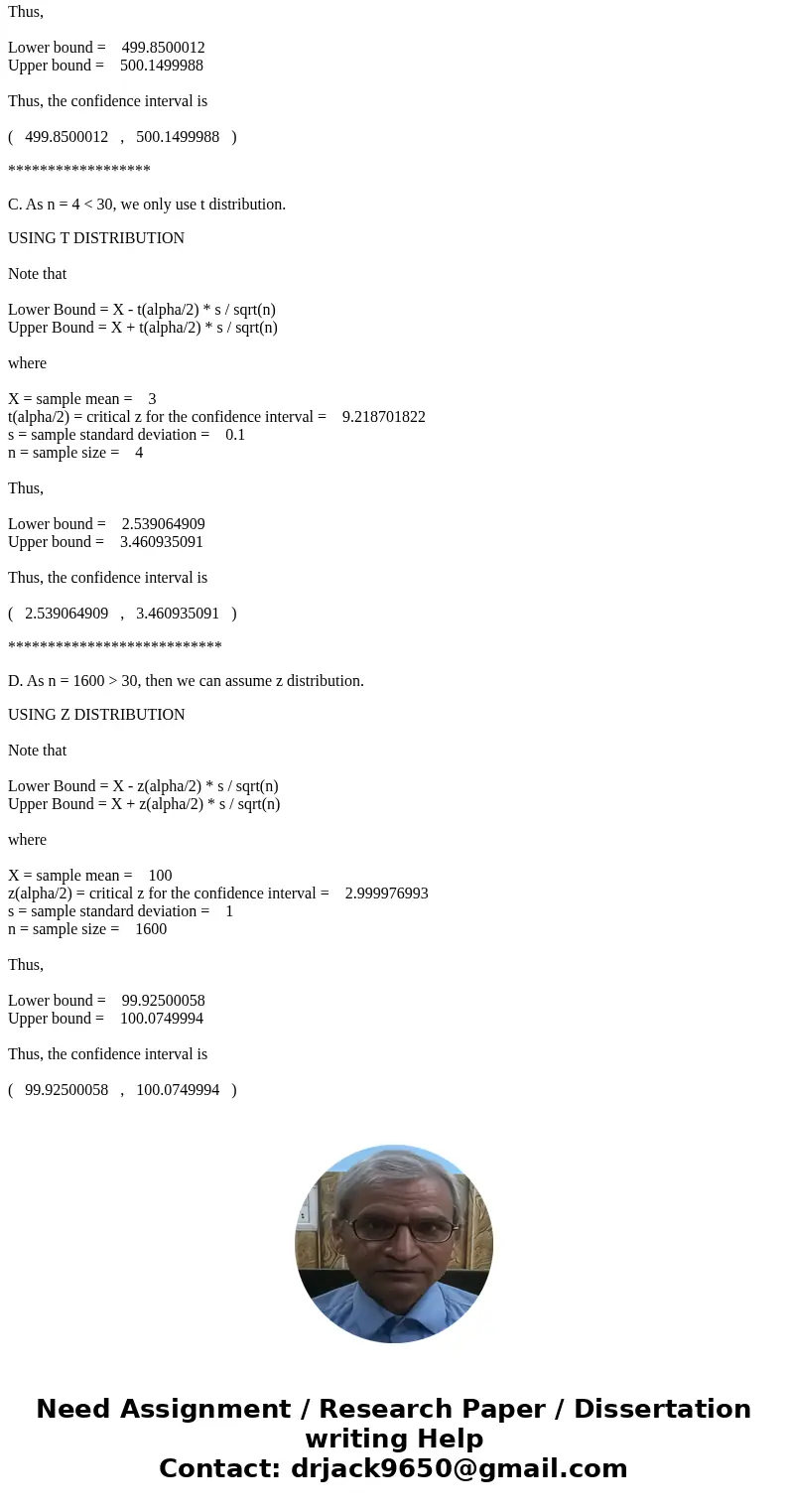Suppose that we will take a random sample of size n from a p
Suppose that we will take a random sample of size n from a population having mean u and standard deviation o. For each of the following situations, find the mean, variance, and standard deviation of the sampling distribution of the sample mean x.
a. u = 10 o = 2 , n = 25
b. u = 500 , o = .5 , n = 100
c. u = 3 , o = .1 , n = 4
d. u = 100 , o = 1, n= 1,600
&
Find an interval that contains (approximately or exactly) 99.73 percent of all the possible sample means, In which cases must we assume that the population is normally distributed? Why?
Solution
Note that the mean, variance, and standard deviation of the sampling distribution of the sample mean x is given by
u(X) = u
variance(X) = sigma^2 / n
sigma(X) = sigma / sqrt(n)
Thus:
a: u(X) = 10, variance(X) = 0.16, sigma(X) = 0.4
b: u(X) = 500, variance(X) = 0.0025, sigma(X) = 0.05
c: u(X) = 10, variance(X) = 0.0025, sigma(X) = 0.05
d: u(X) = 10, variance(X) = 0.000625, sigma(X) = 0.025
******************
A. As n = 25 < 30, we assume t distribution only.
Note that
Lower Bound = X - t(alpha/2) * s / sqrt(n)
Upper Bound = X + t(alpha/2) * s / sqrt(n)
where
X = sample mean = 10
t(alpha/2) = critical z for the confidence interval = 3.344721741
s = sample standard deviation = 2
n = sample size = 25
Thus,
Lower bound = 8.662111303
Upper bound = 11.3378887
Thus, the confidence interval is
( 8.662111303 , 11.3378887 )
***********************
B.
As n = 100 > 30, then we can assume z distribution.
Note that
Lower Bound = X - z(alpha/2) * s / sqrt(n)
Upper Bound = X + z(alpha/2) * s / sqrt(n)
where
X = sample mean = 500
z(alpha/2) = critical z for the confidence interval = 2.999976993
s = sample standard deviation = 0.5
n = sample size = 100
Thus,
Lower bound = 499.8500012
Upper bound = 500.1499988
Thus, the confidence interval is
( 499.8500012 , 500.1499988 )
******************
C. As n = 4 < 30, we only use t distribution.
USING T DISTRIBUTION
Note that
Lower Bound = X - t(alpha/2) * s / sqrt(n)
Upper Bound = X + t(alpha/2) * s / sqrt(n)
where
X = sample mean = 3
t(alpha/2) = critical z for the confidence interval = 9.218701822
s = sample standard deviation = 0.1
n = sample size = 4
Thus,
Lower bound = 2.539064909
Upper bound = 3.460935091
Thus, the confidence interval is
( 2.539064909 , 3.460935091 )
***************************
D. As n = 1600 > 30, then we can assume z distribution.
USING Z DISTRIBUTION
Note that
Lower Bound = X - z(alpha/2) * s / sqrt(n)
Upper Bound = X + z(alpha/2) * s / sqrt(n)
where
X = sample mean = 100
z(alpha/2) = critical z for the confidence interval = 2.999976993
s = sample standard deviation = 1
n = sample size = 1600
Thus,
Lower bound = 99.92500058
Upper bound = 100.0749994
Thus, the confidence interval is
( 99.92500058 , 100.0749994 )



 Homework Sourse
Homework Sourse